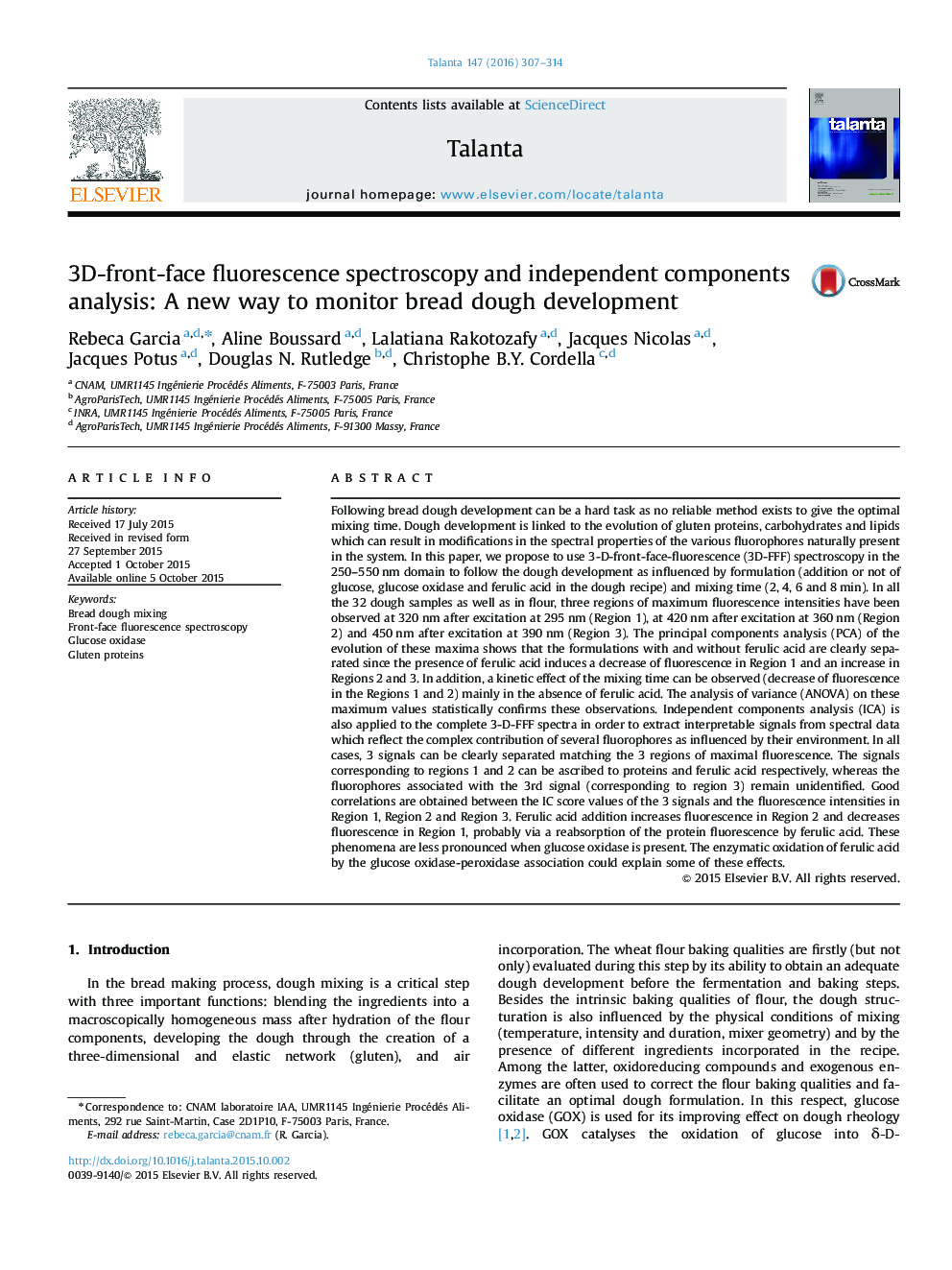| کد مقاله | کد نشریه | سال انتشار | مقاله انگلیسی | نسخه تمام متن |
|---|---|---|---|---|
| 1242760 | 1495788 | 2016 | 8 صفحه PDF | دانلود رایگان |

• 3 regions of maximum fluorescence were observed in dough and flour samples.
• 3 signals matching the regions of maximal fluorescence were separated using ICA.
• Signals corresponding to regions 1 and 2 were ascribed to proteins and ferulic acid.
• Dough fluorescence properties are modified by the formulation and the mixing time.
Following bread dough development can be a hard task as no reliable method exists to give the optimal mixing time. Dough development is linked to the evolution of gluten proteins, carbohydrates and lipids which can result in modifications in the spectral properties of the various fluorophores naturally present in the system. In this paper, we propose to use 3-D-front-face-fluorescence (3D-FFF) spectroscopy in the 250–550 nm domain to follow the dough development as influenced by formulation (addition or not of glucose, glucose oxidase and ferulic acid in the dough recipe) and mixing time (2, 4, 6 and 8 min). In all the 32 dough samples as well as in flour, three regions of maximum fluorescence intensities have been observed at 320 nm after excitation at 295 nm (Region 1), at 420 nm after excitation at 360 nm (Region 2) and 450 nm after excitation at 390 nm (Region 3). The principal components analysis (PCA) of the evolution of these maxima shows that the formulations with and without ferulic acid are clearly separated since the presence of ferulic acid induces a decrease of fluorescence in Region 1 and an increase in Regions 2 and 3. In addition, a kinetic effect of the mixing time can be observed (decrease of fluorescence in the Regions 1 and 2) mainly in the absence of ferulic acid. The analysis of variance (ANOVA) on these maximum values statistically confirms these observations. Independent components analysis (ICA) is also applied to the complete 3-D-FFF spectra in order to extract interpretable signals from spectral data which reflect the complex contribution of several fluorophores as influenced by their environment. In all cases, 3 signals can be clearly separated matching the 3 regions of maximal fluorescence. The signals corresponding to regions 1 and 2 can be ascribed to proteins and ferulic acid respectively, whereas the fluorophores associated with the 3rd signal (corresponding to region 3) remain unidentified. Good correlations are obtained between the IC score values of the 3 signals and the fluorescence intensities in Region 1, Region 2 and Region 3. Ferulic acid addition increases fluorescence in Region 2 and decreases fluorescence in Region 1, probably via a reabsorption of the protein fluorescence by ferulic acid. These phenomena are less pronounced when glucose oxidase is present. The enzymatic oxidation of ferulic acid by the glucose oxidase-peroxidase association could explain some of these effects.
Figure optionsDownload as PowerPoint slide
Journal: Talanta - Volume 147, 15 January 2016, Pages 307–314